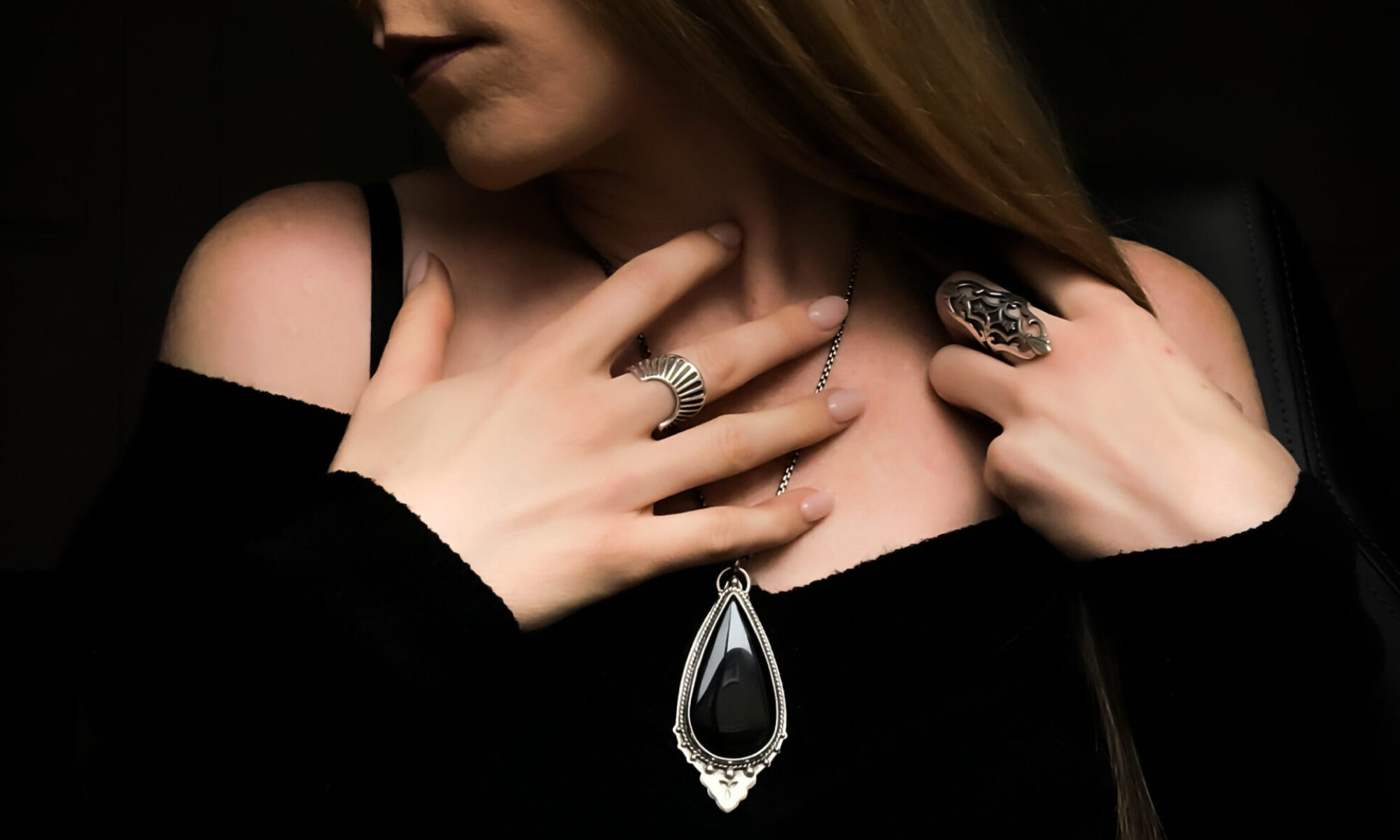 Why Does Silver Tarnish?
Why Does Silver Tarnish?
In order to understand this phenomenon , you have to learn a little background on alloys, and what goes into creating sterling silver.
Alloys
Just as there are many different ways to make a grilled cheese sandwich, there are a many different ways in which fine natural metals are made into a workable long lasting material usable for jewelry.
Fine, pure silver is naturally a lustrous bright white color which will never tarnish over time. Fine silver, as it comes out of the earth is usually far too soft for most jewelry. Sterling silver is an alloy composed of mostly fine silver, but with a small amount of copper and sometimes other metals to strengthen and harden the naturally very soft and fragile pure silver. An alloy is generally a homogeneous mixture of two or more metals smelted together.  Fine silver doesn’t naturally tarnish, but sterling silver does only because of the other metals in the alloy reacting with other natural elements in our surroundings.
In my opinion, some silver tarnish can add character to a piece, darkening the craters and crevices of a design, making details pop and become more noticeable. Although, eventually the silver tarnish may overtake a piece of jewelry entirely making it turn completely black, splotchy, and dull; Tarnished silver jewelry may even leave a dark residue against your skin if not taken care of properly. Tarnish will go through many colors of silver tarnish much like a seasoned bruise in reverse, starting with yellow and ending in black.
Chemical Breakdown
When your silver tarnishes, itÂ’s actually a natural chemical reaction sterling silver has with our all surrounding life giving  AIR!
AIR!
There are many chemicals and elements composing our air that help to achieve this tarnishing process. Some airborne elements and pollutants exist in most of the air we breathe, such as sulfur and hydrogen, creating hydrogen sulfide which is most responsible for turning your grandmother’s antique silver spoons black and blue. This harmless chemical reaction creates a substance called silver sulfate on the very surface of your jewelry; this is the silver tarnish you can visibly see both on your jewelry and sometimes on your skin.
Hydrogen sulfide (the tarnish culprit) is naturally present in our natural body oils. The more often you wear a piece of sterling silver jewelry; the quicker its going to tarnish. My best example of this is when faint dark tarnish fingerprints can be seen on the surface of really old jewelry. That is the hydrogen sulfide in the oils of your fingertips directly leaving tiny amounts of the tarnishing agent onto the surface of your jewelry.
Prevention
There is no way to completely prevent sterling silver from tarnishing unless you remove it from oxygen all together; this is essentially impossible.
Some people have coated their jewelry with clear nail polish, this process works temporarily using an extremely fine coat, but doing this will also kill the luster and beautiful shine of your jewelry, as well as add streaks and texture to the surface of the metal. NO THANK YOU!
Although you cannot completely prevent your jewelry from tarnishing, it is possible to slow the process by following any one of these steps.
*When you are not wearing your jewelry it is important to store it in a clean dry place with little to no airflow such as a small Jewelry box or even a Ziploc bag. This will also keep most air pollutants from reaching your jewels and causing more damage than it does to your lungs. Some chemically treated surfaces and products can also have a drastic darkening effect on your jewelry after some time, so make sure it is in a protected and clean place.
*You can also purchase anti tarnishing strips to store alongside your jewelry to help reduce the tarnishing process. You can order these from most jewelry supply stores such as Rio grande
*It never hurts to also throw a couple silica packs into your jewelry box to absorb any chemical carrying moisture circulating in the air. Usually you can find these in mailing packages to keep moisture from ruining the contents in shipping. I’ve even found them in shoe boxes and some food products. You really shouldnÂ’t have to ever buy these.
Sometimes just a little bit of “elbow grease” and a polishing cloth every so often will be your best bet and it will have to do the job.
(Please read my post on “How To Clean Silver Jewelry“)


 thing. No worries, there are a lot of ways to determine this tiny yet crucial bit of information. First you need to decide on which finger you are going to be wearing this future piece of jewelry. I like to trace both of my hands next to one another on a piece of paper with the sizes written on the fingers to be filed away for future use. If you for some reason gain or lose dramatic amounts of weight or have deforming injuries to one of your digits, this will need to be reconfigured. Sizes for the same fingers on different hands will be surprisingly drastically different; usually the dominant hand will have larger sizes based on the amount of muscle buildup in that hand. Your fingers will also slightly fluctuate in size between warmer and colder temperatures so it is important to allow a fraction of a size in the ring for this to happen comfortably. The ring should not be so tight as to cut off circulation to the fingertips, or so loose as to fall past the knuckle where you might lose it all together. The style of ring you are preparing to wear will also be vital in determining your finger size. A wider style band will be a slightly larger size than a much thinner band.
thing. No worries, there are a lot of ways to determine this tiny yet crucial bit of information. First you need to decide on which finger you are going to be wearing this future piece of jewelry. I like to trace both of my hands next to one another on a piece of paper with the sizes written on the fingers to be filed away for future use. If you for some reason gain or lose dramatic amounts of weight or have deforming injuries to one of your digits, this will need to be reconfigured. Sizes for the same fingers on different hands will be surprisingly drastically different; usually the dominant hand will have larger sizes based on the amount of muscle buildup in that hand. Your fingers will also slightly fluctuate in size between warmer and colder temperatures so it is important to allow a fraction of a size in the ring for this to happen comfortably. The ring should not be so tight as to cut off circulation to the fingertips, or so loose as to fall past the knuckle where you might lose it all together. The style of ring you are preparing to wear will also be vital in determining your finger size. A wider style band will be a slightly larger size than a much thinner band.
